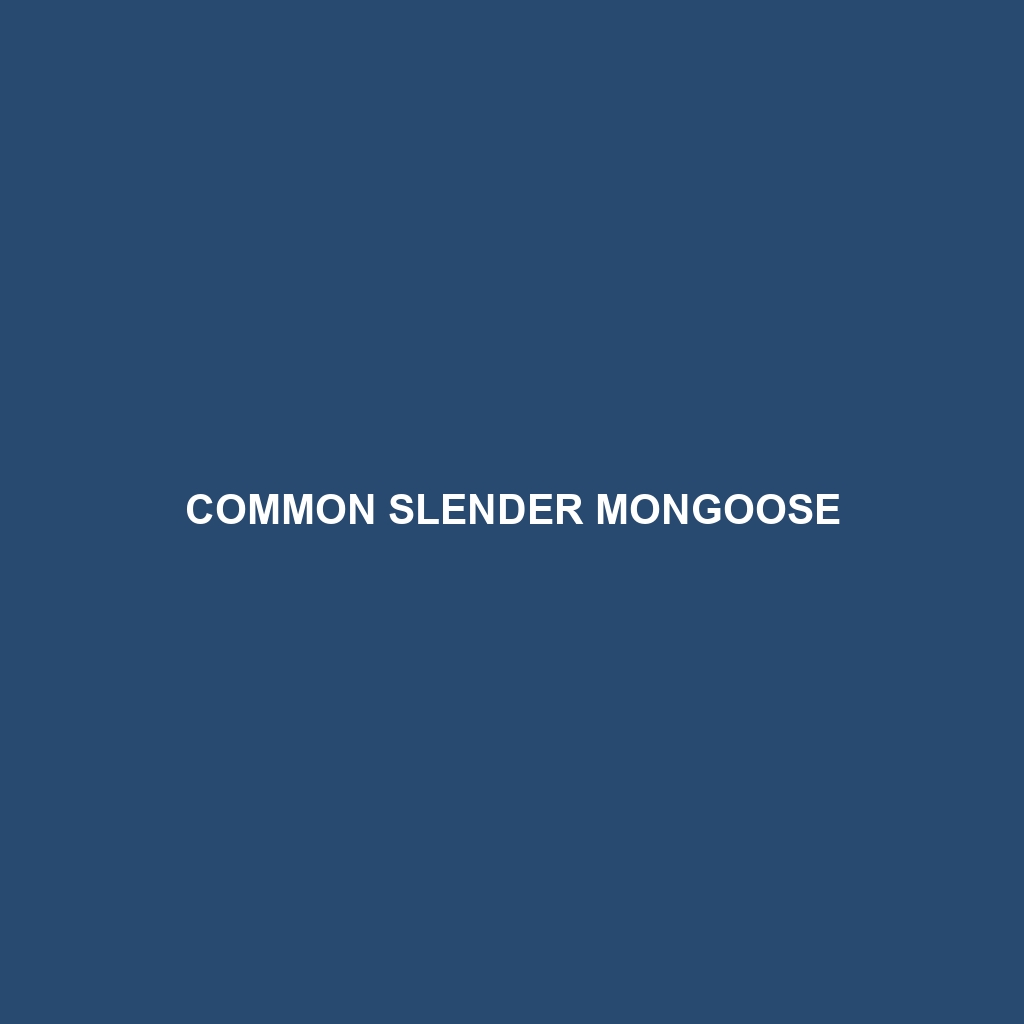Species Description: Cape Gray Mongoose
Common Name: Cape Gray Mongoose
Scientific Name: Galerella pulverulenta
Habitat
The Cape Gray Mongoose is primarily found in southern Africa, specifically in areas such as South Africa, Namibia, and Angola. Its preferred habitats include coastal forests, woodlands, and savannas, where it can find adequate shelter and food sources. These areas typically have a mix of rocky outcrops and thick vegetation, providing the ideal environment for this species.
Physical Characteristics
Adult Cape Gray Mongooses typically weigh between 4 to 8 pounds and measure about 20 to 25 inches in length, excluding their tail, which can be an additional 12 to 15 inches. They have dense, grayish-brown fur with a lighter underbelly and a pointed snout. Their elongated bodies and short legs contribute to their agile movement through dense vegetation. Distinctive features include a bushy tail and sharp claws, which they use for digging.
Behavior
Cape Gray Mongooses are primarily diurnal, engaging in social behavior that includes living in small family groups. They are known for their playful nature and often engage in grooming and social bonding. These mammals are also highly territorial and exhibit a marked vigilance towards potential predators. Their intelligence allows them to utilize various tactics for foraging and survival, which may attract considerable interest among wildlife enthusiasts.
Diet
The diet of the Cape Gray Mongoose is diverse and consists primarily of insects, small mammals, birds, and eggs. They are opportunistic feeders and employ a hunting strategy that includes both scavenging and foraging. Their ability to adapt to different food sources enables them to thrive in varying habitats. Common prey includes rodents, lizards, and various invertebrates, underscoring their role as vital controllers of insect populations.
Reproduction
The Cape Gray Mongoose typically breeds throughout the year, with peaks during the warmer months. Female mongooses give birth to litters ranging from 2 to 4 offspring after a gestation period of about 56 to 70 days. The young are born blind and depend heavily on their mother for nourishment and protection during the initial weeks of life. Notably, family groups often work together to rear the young, showcasing a high level of social cooperation.
Conservation Status
As of now, the Cape Gray Mongoose is classified as ‘Least Concern’ by the IUCN Red List, indicating that it is not currently facing any significant threat. However, habitat destruction and human encroachment may pose future risks. Continued monitoring of their populations is essential to ensure their long-term survival and maintenance of healthy ecosystems.
Interesting Facts
One fascinating fact about the Cape Gray Mongoose is their ability to consume venomous snakes, such as cobras, thanks to their quick reflexes and partial immunity to snake venom. They are also known for their loud vocalizations, which serve various social functions within their groups.
Role in Ecosystem
The Cape Gray Mongoose plays a crucial role in its ecosystem as a predator and scavenger. By controlling populations of small mammals and insects, they help maintain ecological balance. Furthermore, their scavenging behavior contributes to the nutrient cycle by aiding in the decomposition process of dead animals.

